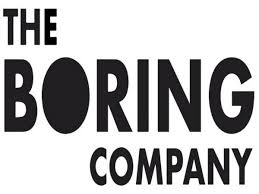Title Page
-
Conducted on
-
Prepared by
-
Location
DEFINITION:
-
Hot Work is any temporary operation involving open flames or equipment producing heat or spark
TYPICAL LIST OF HOT WORKS:
-
List of typical hot work includes: welding, heat treating, grinding, thawing pipe, hot riveting, soldering, brazing, powder-driven fastener operations, torch applied roofing, glass blowing, using a heat gun to heat/soften floor tiles, and similar activities involving spark, flame, or heat.
-
COMPLETE THE FOLLOWING CHECKLIST BEFORE PROCEEDING WITH HOT WORK OPERATIONS:
BUILDING SYSTEMS:
-
With regard to building systems, ensure that:
-
Fire sprinklers, if existing, are kept operational
-
Building ventilation protected from smoke and fumes
-
Fire alarm system kept operational; detectors disabled only if necessary, i.e., if they would likely be activated by the work;
-
HNC Project Manager requires at least 24 hours notice to identify the need and disable detectors
-
Only HNC is authorized to disable fire alarm devices
-
Cutting and welding equipment in good operating condition and UL listed when applicable
PERSONNEL / OCCUPANT PROTECTION:
-
With regard to building occupants, ensure that:
-
Workers and occupants protected from smoke, fumes, and toxic materials by use of exhaust ventilation or other approved safety measures.
-
Vision screens/barriers in place
-
Confined space entry permit/procedures in place when applicable
-
Energized equipment locked/tagged out of service when applicable
-
Workers properly trained in use of equipment
Within 35 feet of the area, ensure that:
-
Floors swept clean of combustibles
-
Combustible floors swept down & covered with damp sand, metal or other spark/heat shields
-
Combustible and flammable materials removed
-
Flammable liquids, dust, lint, and oily deposits removed
-
Explosive atmosphere in area eliminated
-
Fixed combustibles and flammables covered with fire-resistive covers, guards, and/or shields
-
Wall and floor openings covered with non-combustible covers
-
Fire-resistive covers suspended beneath work to collect sparks
-
WORK ON OR NEAR WALLS FLOORS OR CEILINGS:
-
Prior to the start of work ensure that:
-
All holes, cracks and penetrations are sealed with non-combustible material
-
Construction is non-combustible and without combustible covering or inulation. Otherwise, combustible covering or insulation. Otherwise, combustibles are to be shielded/protected
-
Combustibles moved away from opposite side of wall and second fire watch provided where required
-
WORK ON ENCLOSED EQUIPMENT (tanks,ducts,plenums,etc.)
-
Confined space entry permit/procedures
-
Compressed gases out of confined space
-
Equipment empty, cleaned of residues, pressure released, purged of vapors, and gas valves shut off
-
FIRE WATCH (at work site)
-
Fire watcher is to be present 30 minutes before for combustible clean-up, during and for 30 minutes after operation to ensure that no smoldering fires exist.
-
Fire watcher is to search for any smoldering or flaming ignition and extinguish any such sources.
-
Fire watcher is to be supplied with hose and/or fire extinguishers of proper size and type and be properly trained in use.
-
Fire watcher is to be trained in emergency procedures and activating fire alarm
-
The permit applicant or their representative is to protect all combustibles from hot work ignition sources. This includes sealing of floor and wall penetrations.
-
Fire watcher is to stop hot work if any of the safety precautions cannot be met
-
Fire watcher is to locate the nearest fire alarm pull station before hot work begins and pull the alarm immediately if an emergency occurs.
-
Fire watcher is to have access to a telephone to dial contact









